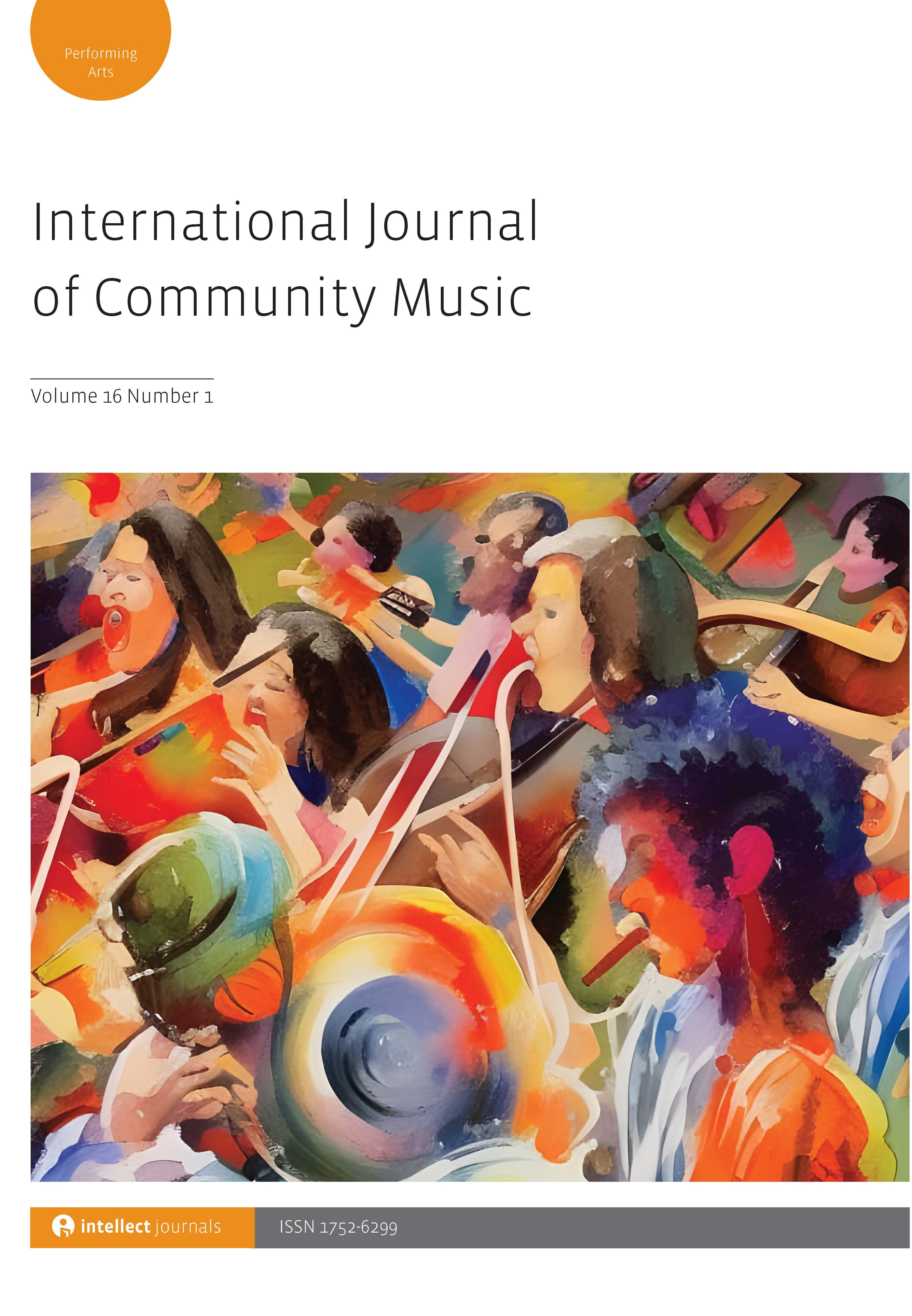
Full text loading...
 , Graeme B. Wilson1
, Graeme B. Wilson1 , Joy Vamvakaris2
, Joy Vamvakaris2 , Kirsty Brown3, Michael McEwan4, Raymond A. R. MacDonald1
, Kirsty Brown3, Michael McEwan4, Raymond A. R. MacDonald1
Previous community music research indicates a diverse field with many forms of practice. Understanding the views of community music practitioners about their approaches offers an important way to understand their professional identities and strategies they employ. A qualitative study interviewed five community music practitioners from the same company to investigate their approaches. Two had 30 years of experience and were training three practitioners in workshop leading; one trainee (Joseph) has additional support needs (ASN). Two lay researchers with ASN contributed to thematic analysis. Two themes were identified: pedagogical identities accentuated personalization and enacting inclusivity as key dimensions of being a workshop leader; interpersonal processes demonstrated the crucial nature of individualized communication, humour and building relationships. Although Joseph’s interview shared these themes, he also identified confidence, adaptability and creativity as key qualities for himself to develop and expressed a strong personal identification with participants’ development of self-efficacy. While interviewees had varied musical backgrounds and skills, common principles may offer a basis for the translatable beneficial impacts of community music across the highly diverse facilitators and settings that characterize this field. Appreciating pedagogical contributions of practitioners with ASN can help in envisaging new identities and ways of being creative and inclusive in community music practice.

Article metrics loading...

Full text loading...
References


Data & Media loading...

Publication Date:
https://doi.org/10.1386/ijcm_00070_1 Published content will be available immediately after check-out or when it is released in case of a pre-order. Please make sure to be logged in to see all available purchase options.